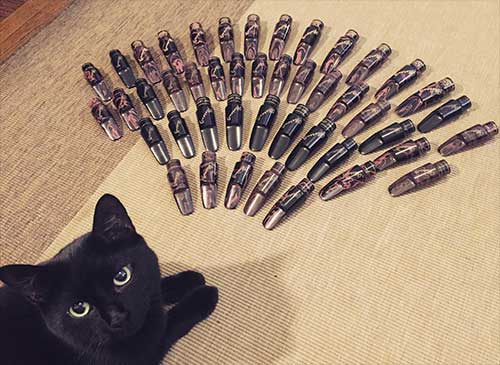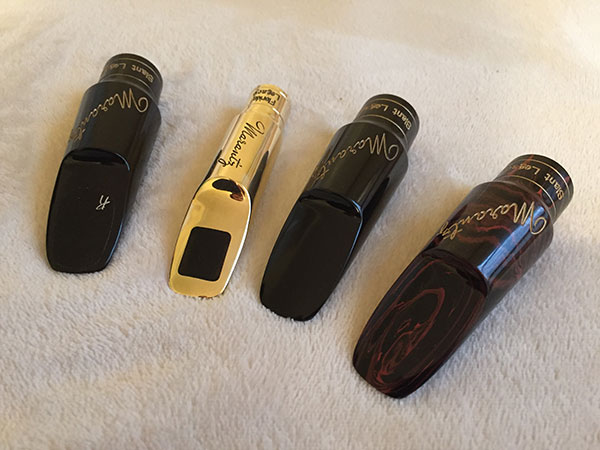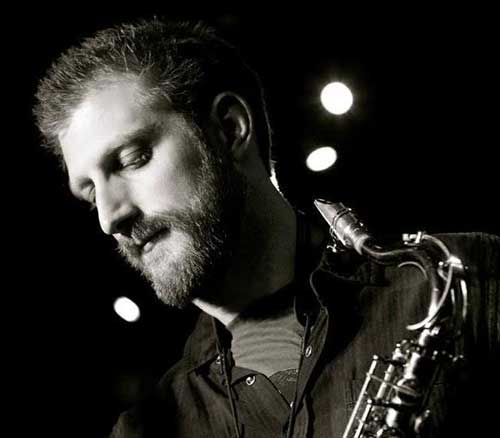Matt Marantz and the Art of Mouthpiece Making and Refacing
Introduction
For those of you who don’t already know Matt Marantz, Matt is not just a great saxophone player, but over time has become one of the go-to guys for refacing mouthpieces. Since I have known Matt and have been able to check out his line of mouthpieces, I understand why his services have become increasingly in demand. I was excited to get the chance to learn more from Matt about his background as a musician as well as how he got into mouthpiece refacing – a business which has changed quite a bit over the past 5 to 10 years.
Matt Marantz Bio
- Originally from Dallas Texas, Matt grew up in a musical family and attended high school at the Booker T. Washington Arts Magnet.
- Some of Matt’s early accomplishments can be seen in publications such as Downbeat and Jazziz magazines.
- After graduating High School, Matt moved to New York City to study at the Manhattan School of Music with saxophonist Bob Mintzer on a full scholarship.
- Matt began appearing alongside his musical peers at NYC venues as well as venues such as the Monterey Jazz Festival in California, the Umbria Jazz Festival in Italy, and the TIM Jazz Festival in Brazil.
- After finishing up at the Manhattan School of Music, Matt was selected as one of the 2009-2011 Thelonious Monk Institute of Jazz artist-diploma class members, where he studied and performed with the likes of Terence Blanchard, Herbie Hancock, Jack DeJohnette, and Jason Moran.
- Matt released his debut album, Offering accompanied by guitarists Steve Cardenas and pianist Sam Harris.
- Shortly after, in 2012, Matt released his second recorded work which was a collaborative effort between Matt and his brother, pianist Luke Marantz called The Primary Colors.
Currently, Matt resides in the NYC metro area and continues to teach and perform as a sideman and leader. When Matt is not teaching or performing, he is busy at the bench refacing and producing his own line of mouthpieces for players all around the world.
Interview
ZS: What got you into refacing mouthpieces and why do you continue to reface and produce your own line of mouthpieces today?
MM: When I was in high school, there was a website called mouthpiece heaven which was started by Theo Wanne. I was constantly checking out this site because there was some great information on mouthpiece brands, models, facings etc. which I was interested in because I was having trouble finding a mouthpiece on alto that worked for me. While attending various conferences over the years like the International Association For Jazz Education (IAJE), I was picking up mouthpieces from time to time that worked better than my current setup but I was still overall never happy. Since I was unhappy, I actually reached out to Theo Wanne with a few questions regarding mouthpieces and some of the issues I was running into. Theo actually wrote me back with answers to my questions and said he had a custom refaced Meyer which he thought I would really enjoy. I decided to purchase this custom Meyer mouthpiece which ended up playing quite well.
While at the Manhattan School of Music, one of the tenor player’s I played with in various ensembles actually refaced mouthpieces and was well known in the NYC area. I noticed he played on an old link and I was curious to check it out since I had never had a good experience with the links I currently owned. When asking him about his setup, he mentioned that he actually refaces mouthpieces and studied with Jon Van Wie as well as Ted Klum. Knowing he worked on mouthpieces, I brought him a metal link that I originally purchased from Roberto’s in NYC that I felt was not working great. He spent close to 4 hours working on my metal Otto link and let me watch him and his process for refacing mouthpieces. During this time, I actually had no interest on working on mouthpieces and was just focused on playing. I fell in love with the link he refaced and decided to bring over some other mouthpieces (mainly alto and soprano). In addition to using him, I also sent some of my mouthpieces to other refacers but unfortunately got frustrated when I received them back and they were not up to my standards.
A mouthpiece refacer named Keith Bradbury (aka “Mojo”) had tools for sale on his website such as gauges, sand paper, and other items. Since I had already accumulated close to 40 junk mouthpieces, and was spending quite a bit of money on mouthpieces that were not meeting my standards, I decided that I was going to learn how to reface mouthpieces starting in 2010. Keith’s website was full of helpful articles on refacing mouthpieces from players such as Ralph Morgan.
My first few years I ruined close to 30 or 40 of my mouthpieces while trying to figure out how to apply various facing curves. Over time, I got better and better to the point where I knew how the mouthpiece was going to play before even applying various mouthpiece curves. My first customers were actually my friends who would give me mouthpieces that they were not playing anymore so I could work on them and send them back.
When I was in Grad school, I took a music business class and realized that just playing gigs was not going to cut it so I put together a website about my playing and added a section on mouthpieces. After not much time, people started to find out about my refacing work and started to send me requests to reface their mouthpieces. By the time I graduated in 2013, I moved back to Brooklyn and tried to promote my refacing services on the internet with sites such as Sax on The Web. A couple of years later I was hired by Rafael Navarro after he saw some of my work with the request to work on 100 mouthpieces for him. This was my first time working on a bulk order which I would take the blanks he sent me and my goal was to reface each mouthpiece by hand. This amount of work helped me hone my chops because I was doing refacing on a small scale (one by one) in the past. Not long after, I decided to move my shop from working from home to a music store in NYC which resulted in a lot of New York players stopping by to check out my mouthpieces and refacing work. After some time in NYC, I decided to move my shop back to Brooklyn and work from home.

ZS: Many of your mouthpieces are based off of some of the most sought after vintage mouthpieces: Meyer’s, Link’s, Selmer’s, Guardala’s, Dukoff’s, etc and the list goes on. Are your mouthpieces inspired by vintage mouthpieces from the past?
MM: Most of the pieces I make are inspired by Meyer Bros & New York as well as a Slant and Double Ring Link. My goal is to produce a modern version of these mouthpieces that are more stable and consistent from mouthpiece to mouthpiece. My new “La Moderna” line for soprano at the moment is a unique design not based off of vintage mouthpieces from the past, and I’ve found this design really works for my playing, and others who have stopped by to try one have said the same. Based on the feedback, I am potentially looking into producing the La Moderna line for alto and tenor in the future.

ZS: What do you see as one of the major problems with off the shelf mouthpieces in many music stores today?
MM: What I see as the main problem is the table is not flat which I am able to check with a perfect flat block of steel and applying various pressure points to make sure I do not see any light. I have seen this issue with various Meyers, Otto Links, and Vandoren mouthpieces to name a few. I do see issues with facing curves as well but this is less of an issue then I would expect and the good news is it can be easily corrected.
ZS: With more and more mouthpiece refacers entering the scene, how do you stay ahead and competitive?
MM: I have been refacing mouthpieces for 10+ years that at this point I actually don’t advertise as much. Thanks to word of mouth, I am constantly busy with refacing work. Although more refacers are coming on the scene today, there has also been in increase in the number of players, which has created more than enough work to go around. I have found over time that once players find out about the quality of my work, they will typically come back to me with future requests. I feel that in comparison to other refacers, the time and energy that I put into each reface is something I do not see many refacers doing today.
ZS: Why have mouthpieces increased in price over the years? Is it a cost of materials, or customer expectations which seem to demand more hand-work?
MM: The cost of materials has increased over time, but mainly the amount of time to do great refacing work requires quite a bit of effort, which is reflected in the price.
ZS: Any future mouthpiece projects on the horizon, or new directions you see the business going?
MM: For me, I am continuing to improve the work that I do and striving to get blanks more and more consistent, which will allow me to work on what makes the mouthpiece play well instead of working on cleaning up the machine work done on the blanks. I am also wanting to make more mouthpiece models that appeal to a larger audience over just players who are looking for Link and Meyer type mouthpieces.
To Learn More About Matt…
Matt Marantz Mouthpieces/refacing






